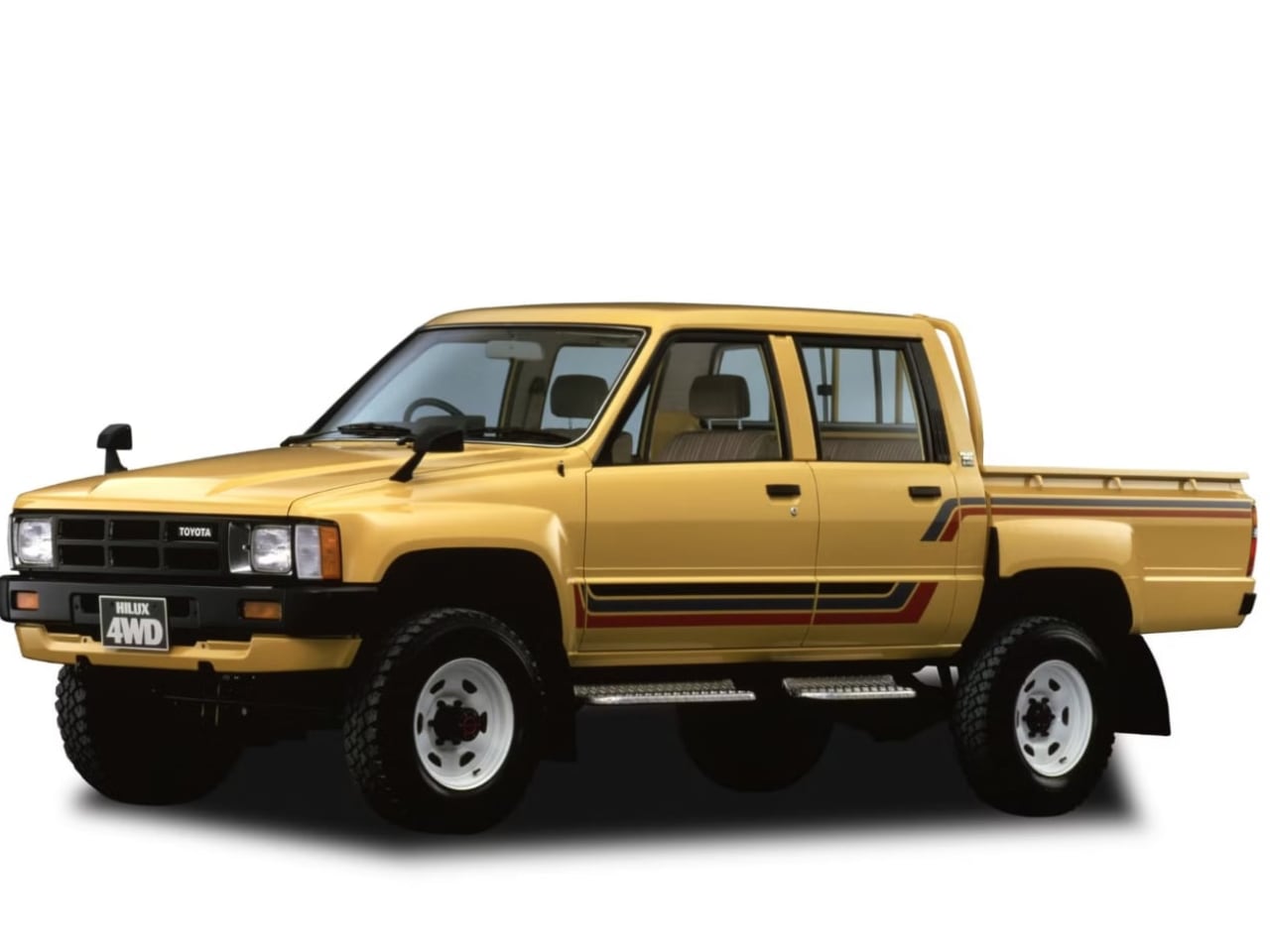Technology
Hilux Redefines Pickup Design with Uncompromising Simplicity

The Toyota Hilux emerged as a revolutionary pickup truck during the 1980s, setting itself apart from competitors by prioritizing functional design over decorative embellishments. While American manufacturers focused on aesthetics with chrome finishes and comfort upgrades, Toyota’s approach in Tokyo was rooted in a philosophy of industrial minimalism. This design ethos propelled the Hilux to outsell every American sports car from 1983 to 1985, showcasing the value of simplicity and purpose in automotive design.
Design Philosophy: Function Over Form
The Hilux’s design exemplifies a commitment to clarity and utility. This philosophy, shaped by Japan’s post-war industrial context, emphasized the importance of materials and space. The truck featured flat body panels that met at right angles, avoiding unnecessary sculpting or decoration. Unlike its American counterparts, which often concealed seams and joints with plastic cladding, the Hilux exposed its structural components openly. This choice was not merely a cost-saving measure; it was an assertion of design integrity.
Toyota’s designers adopted a “design by elimination” approach, stripping away anything that didn’t serve an immediate function. The dashboard contained only four essential gauges, and the steering wheel was made from durable rubber instead of leather. The aesthetics of the Hilux emerged not from a lack of resources but from a conviction about prioritizing what truly matters in vehicle design.
Engineering Meets Aesthetic Clarity
The Hilux’s proportions were guided purely by mechanical requirements, resulting in a vehicle that was both practical and visually striking. With a short wheelbase for maneuverability and high ground clearance for capability, every aspect of its design served a specific purpose. This intentional geometry allowed the Hilux to exude a sense of purpose, whether navigating Tokyo’s urban streets, traversing the Australian outback, or operating in conflict zones.
The design’s success lay in its ability to communicate utility without the need for marketing jargon. The Hilux’s straightforward form made it universally recognizable as a capable and maintainable vehicle. Its features, such as exposed fasteners and accessible components, reflected a philosophy that championed repairability over complexity. Unlike many Western trucks that required specialized tools for maintenance, the Hilux was designed for easy intervention, allowing for longevity and serviceability.
The choice to retain manual window cranks, rather than adopting power windows, further underscored Toyota’s commitment to practicality. This design decision was not motivated by cost savings but by a desire for field repairability, ensuring that the vehicle could be maintained in a variety of conditions.
Impact and Relevance in Today’s Market
The Hilux’s design principles remain increasingly relevant in the context of modern automotive challenges, especially with the rise of electric vehicles and urbanization. As manufacturers face constraints related to battery weight, sustainability, and urban density, the Hilux offers a blueprint for future designs. Its principles of removing unnecessary features, exposing structural elements, and prioritizing function over luxury are crucial as the industry evolves.
Toyota’s design philosophy from the 1980s serves as a reminder that effective industrial design requires an understanding of real-world needs. The Hilux’s combination of simplicity and functionality has allowed it to thrive across four decades and in various markets around the globe.
The enduring success of the Hilux demonstrates that true design excellence lies not in aesthetics but in the ability to create a vehicle that meets practical demands while communicating its purpose clearly. As current and future vehicles are developed, the lessons learned from the Hilux’s minimalist approach will undoubtedly shape the next generation of automotive design.
-

 Science3 months ago
Science3 months agoToyoake City Proposes Daily Two-Hour Smartphone Use Limit
-

 Top Stories3 months ago
Top Stories3 months agoPedestrian Fatally Injured in Esquimalt Collision on August 14
-

 Health3 months ago
Health3 months agoB.C. Review Reveals Urgent Need for Rare-Disease Drug Reforms
-

 Technology3 months ago
Technology3 months agoDark Adventure Game “Bye Sweet Carole” Set for October Release
-

 World3 months ago
World3 months agoJimmy Lai’s Defense Challenges Charges Under National Security Law
-

 Lifestyle3 months ago
Lifestyle3 months agoVictoria’s Pop-Up Shop Shines Light on B.C.’s Wolf Cull
-

 Technology3 months ago
Technology3 months agoKonami Revives Iconic Metal Gear Solid Delta Ahead of Release
-

 Technology3 months ago
Technology3 months agoApple Expands Self-Service Repair Program to Canada
-

 Technology3 months ago
Technology3 months agoSnapmaker U1 Color 3D Printer Redefines Speed and Sustainability
-

 Technology3 months ago
Technology3 months agoAION Folding Knife: Redefining EDC Design with Premium Materials
-

 Business3 months ago
Business3 months agoGordon Murray Automotive Unveils S1 LM and Le Mans GTR at Monterey
-

 Technology3 months ago
Technology3 months agoSolve Today’s Wordle Challenge: Hints and Answer for August 19









